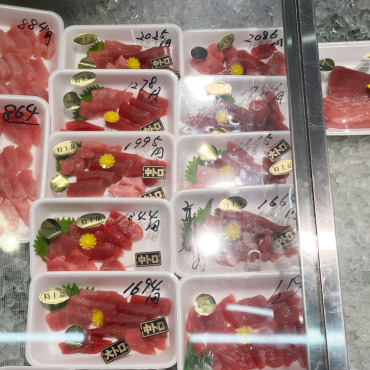
~ Kumano Sanzan Pilgrimage, Exquisite Tuna, Cycle Train ~
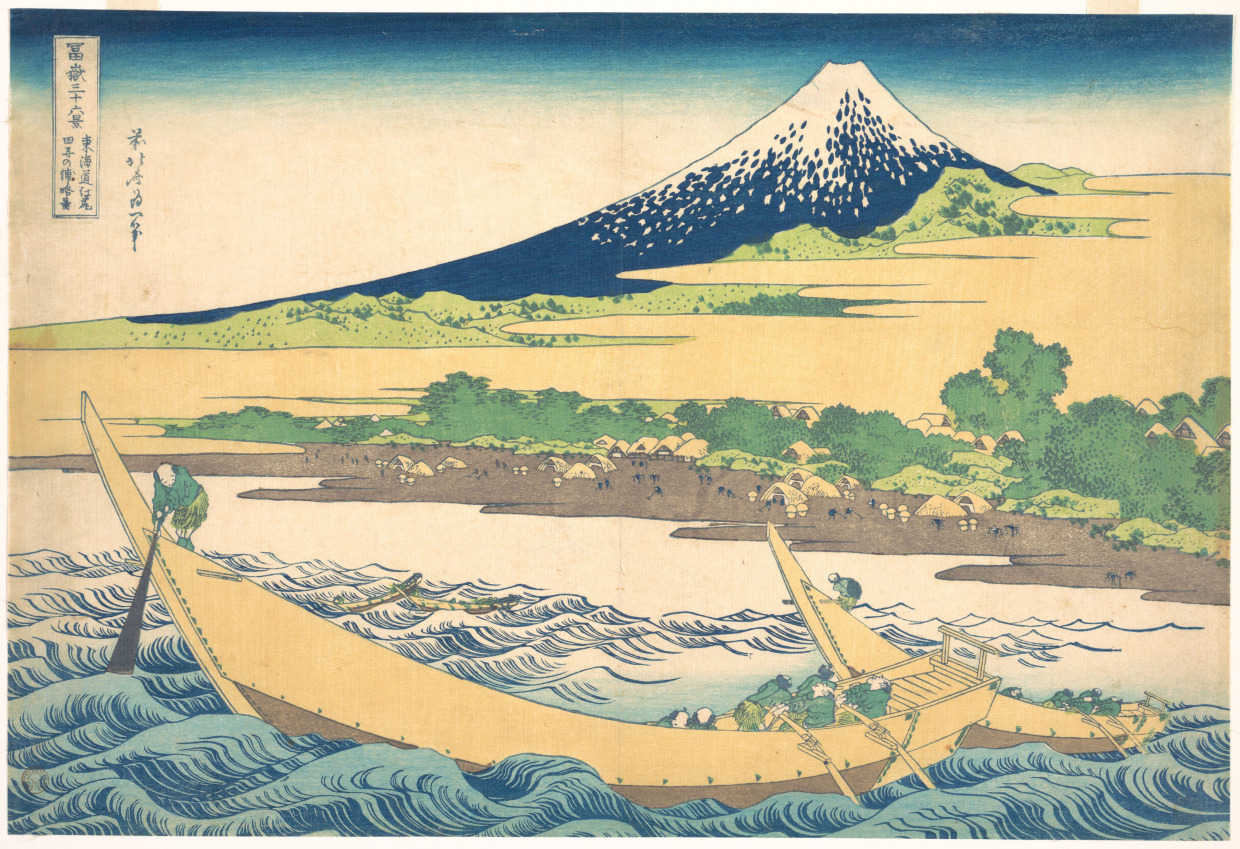
The Thirty-six Views of Mount Fuji was created by Katsushika Hokusai, a ukiyo-e artist of the late Edo period. As many will know, it is an ambitious series of woodblock prints capturing Mount Fuji in its myriad expressions, which change dramatically depending on the viewpoint and the time of day. In addition to the thirty-six prints indicated by the title, a further ten were later added—likely inspired by the popular Fuji worship (Fujikō) movements among the common people—bringing the total to forty-six works.
In August 2025, I am in the midst of a journey to visit all forty-six of these landscapes under my own power.
In this installment, I focus on three of them—The New Fields at Ōno in Suruga Province, Tago Bay near Ejiri on the Tōkaidō, and Fuji from the Katakura Tea Fields in Suruga—and retrace their model locations in Shizuoka by bicycle. This is the first of a three-part series chronicling my cycling journey through the Thirty-six Views of Mount Fuji.
The top artwork is Katsushika Hokusai’s Tago Bay near Ejiri on the Tōkaidō
Images of Hokusai’s works featured here are courtesy of The Metropolitan Museum of Art
Text & Photo: Hokokara
Table of Contents
1. The New Fields at Ōno in Suruga Province
2. Riding Along the Coast of Suruga Bay
3. Tago Bay near Ejiri on the Tōkaidō
4. Fresh Whitebait Bowl at the Tagonoura Port Fisheries Cooperative Cafeteria
5. Riding the Riverside Paths Along the Fuji River
6. Fuji from the Katakura Tea Fields in Suruga
7. Fuji City Cycle Station “Fuji-Kuru”
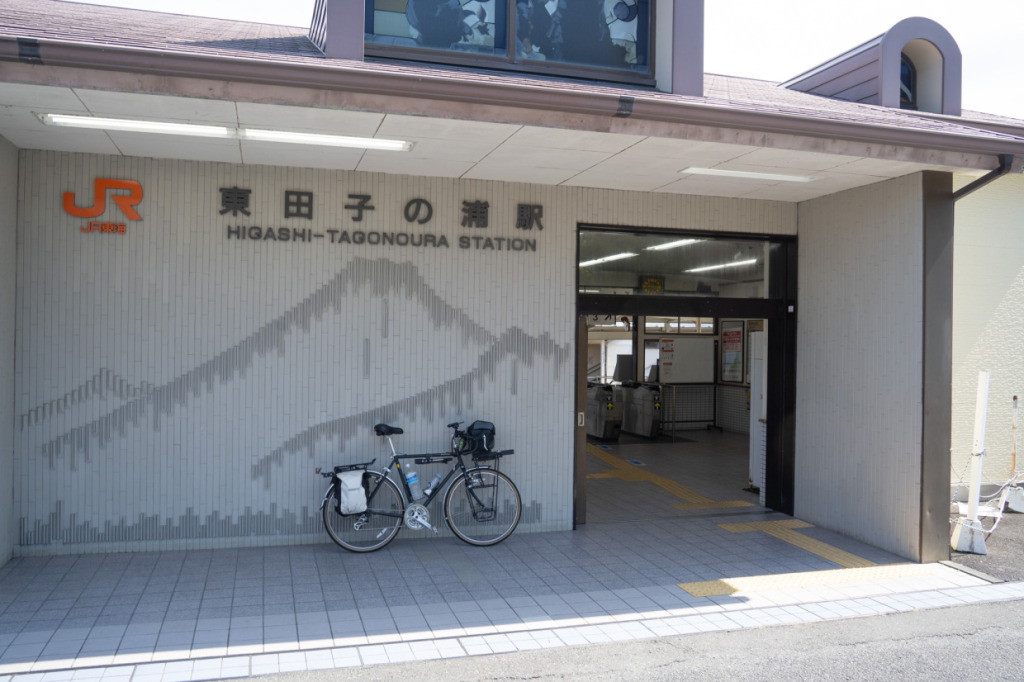
The starting point of my journey is JR Higashi-Tagonoura Station in Fuji City, Shizuoka Prefecture. Not far from here lies the area around Ōno Shinden in Fuji City, believed to be the model for Hokusai’s The New Fields at Ōno in Suruga Province.
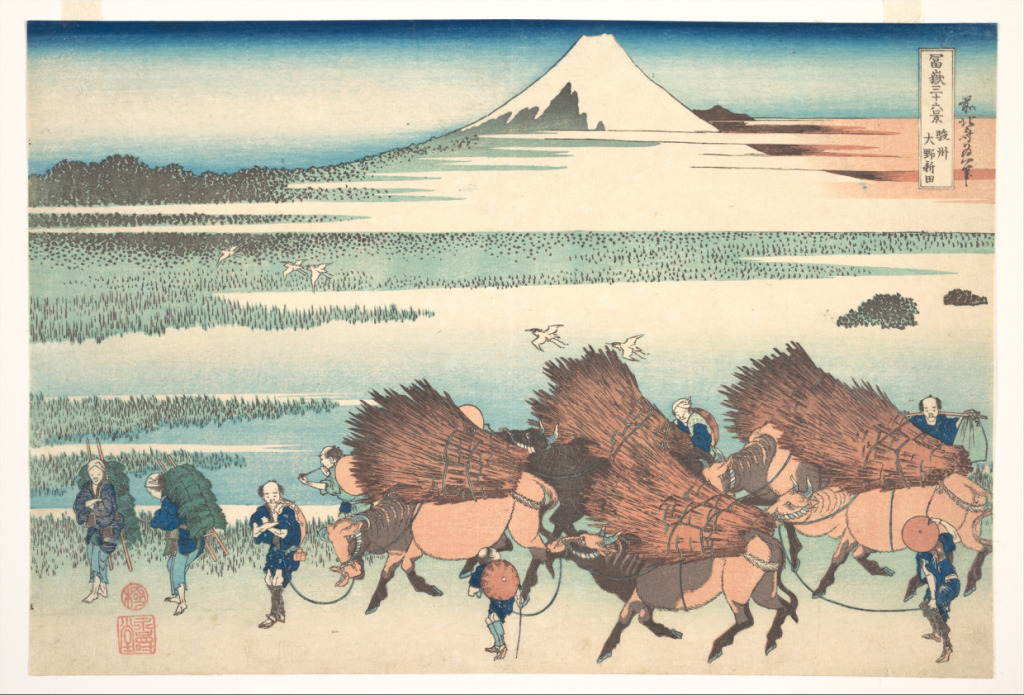
Once a scenic area surrounded by marshland and reeds, this landscape in Hokusai’s work shows the majestic Mount Fuji rising behind a farmer and an ox carrying bundles of reeds.
To find the modern-day Ōno Shinden of Suruga, I rode my bicycle a few minutes to Ukishimagahara Nature Park. Here, you can still view Mount Fuji beyond the clusters of reeds growing along the water’s edge.
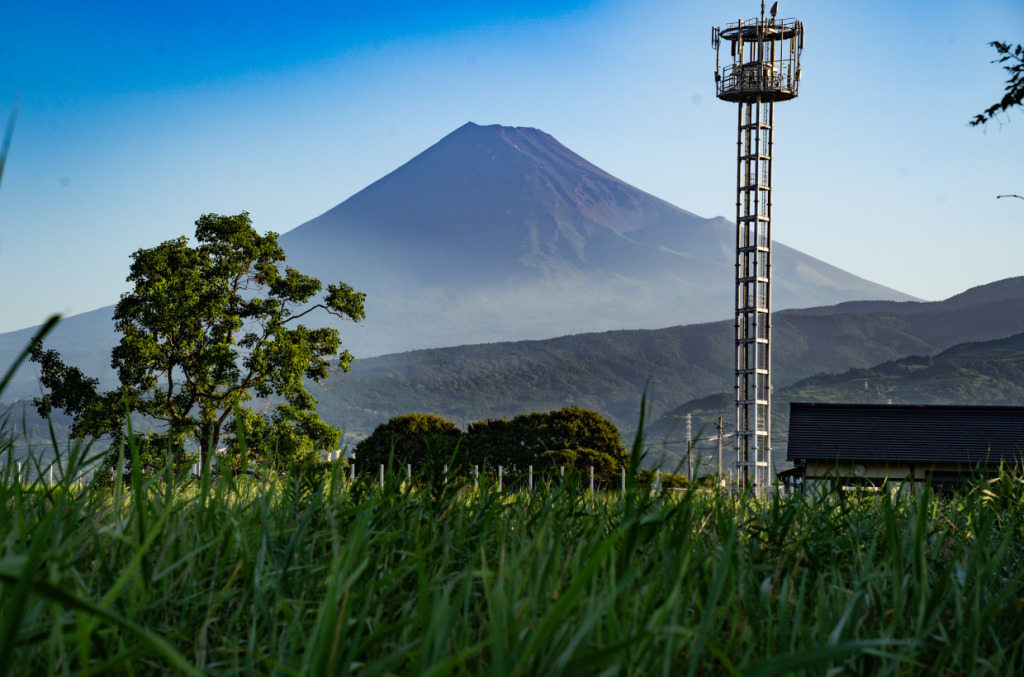
Mount Fuji rising beyond the reeds is exactly as Hokusai depicted it. While it’s no longer possible to photograph an ox carrying bundles of reeds today, the grandeur of Mount Fuji surely retains the same timeless charm it held in Hokusai’s era.
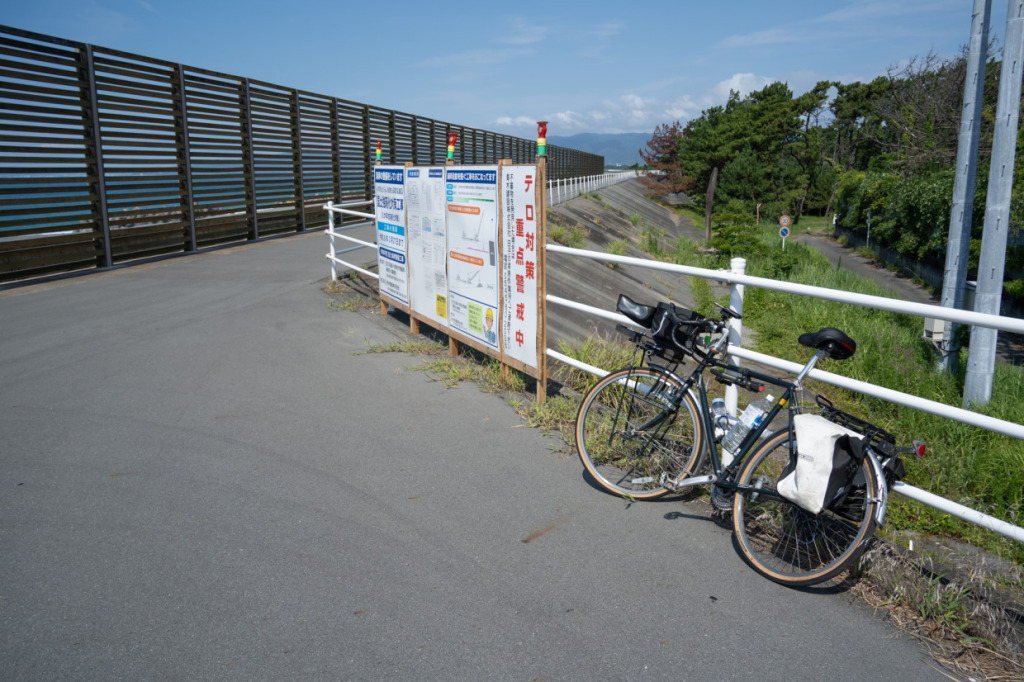
This cycling journey began with the pleasure of viewing Mount Fuji beyond the reeds. While I eagerly anticipate the next landscape from the Thirty-six Views of Mount Fuji, first, let’s take a moment to savor the beauty of the sea.
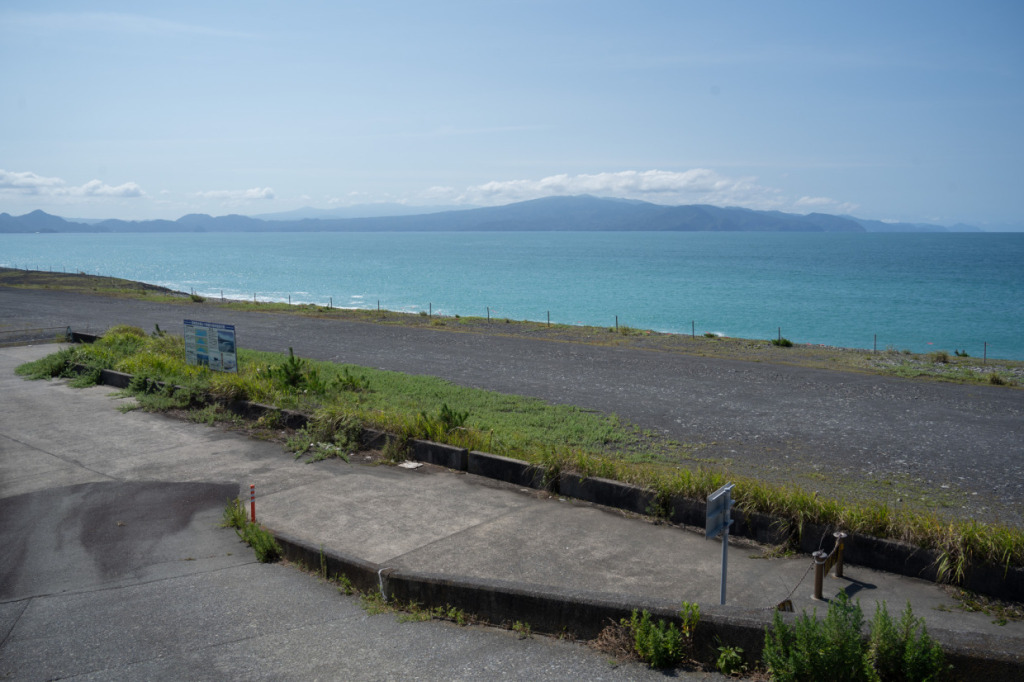
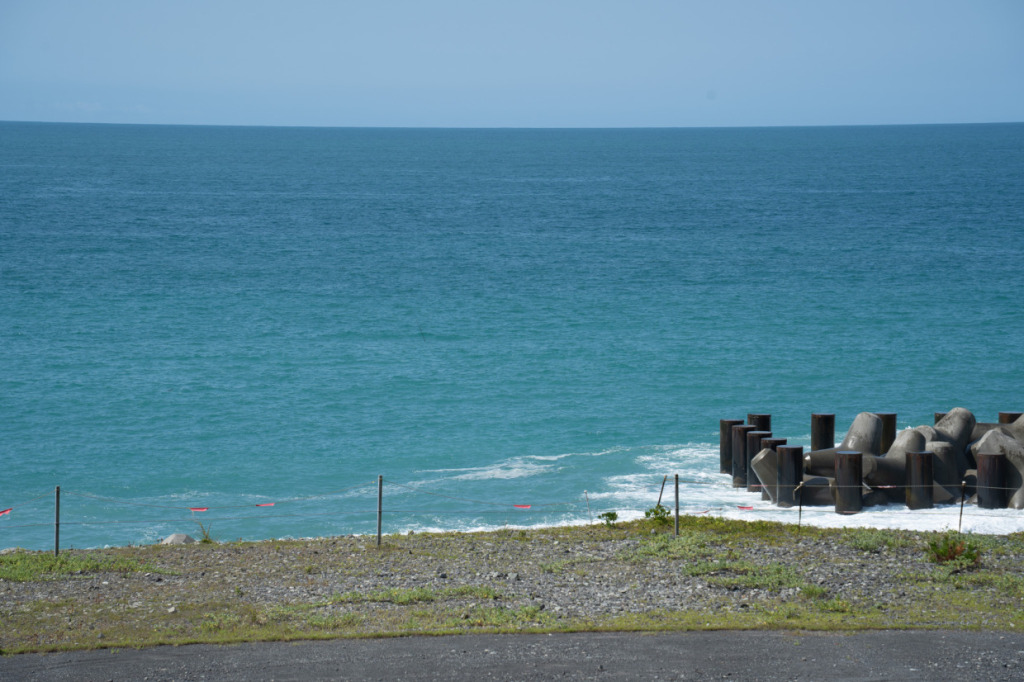
Upon reaching the coast, the road soon transforms into an open cycling path along Suruga Bay. Cycling while gazing out over Suruga Bay, which boasts Japan’s greatest depth of approximately 2,500 meters, offers an unparalleled sense of freedom.

This route restricts vehicle access, allowing only pedestrians and cyclists to pass, making it a safe and peaceful path. With plenty of width, you can ride at a relaxed pace while enjoying the sea breeze.
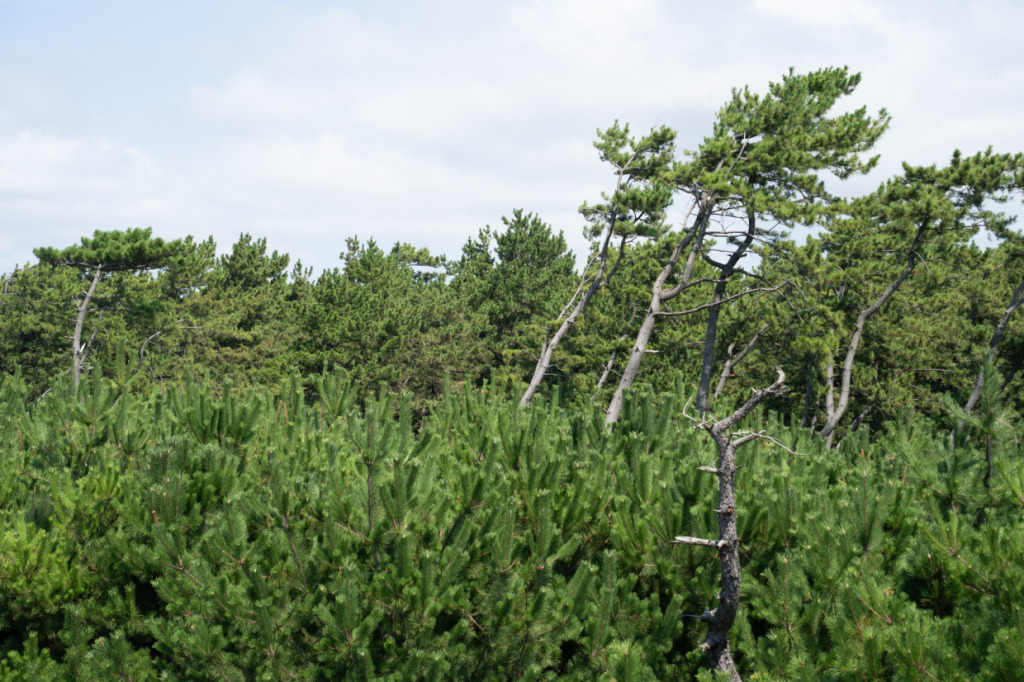
Beneath a clear, sunlit sky, the deep blue of the sea makes this cycling route a visual delight. The slightly stronger sea breeze is a welcome relief in the intense summer heat. Even in photos, you can sense the strength of the wind from the windbreak trees leaning at an angle, shaped by the gusts.
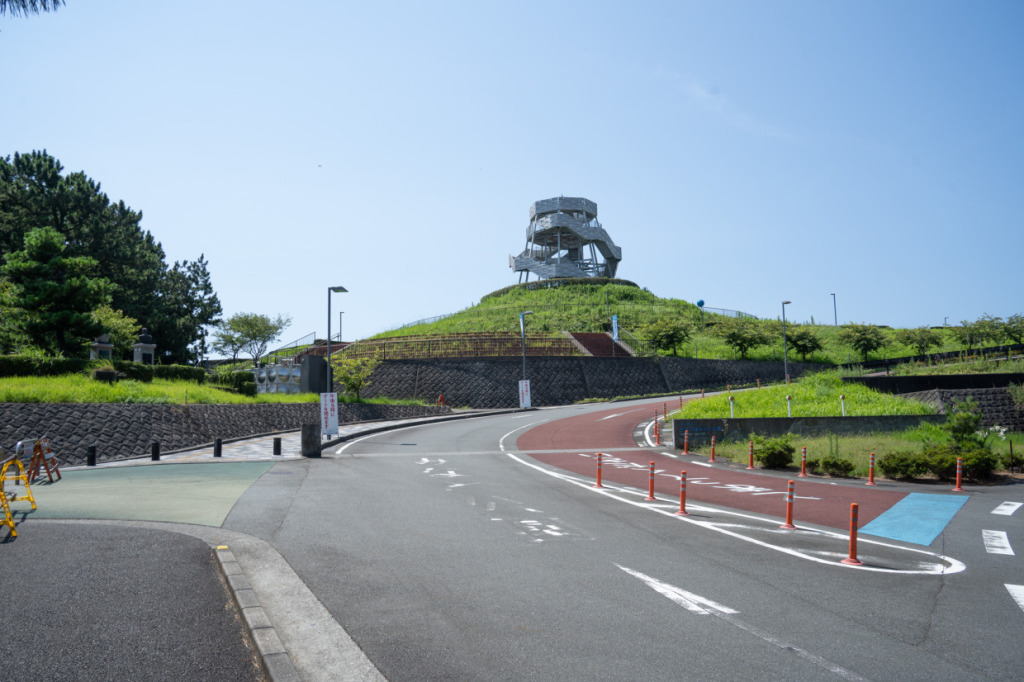
After enjoying a refreshing ride along the bay, I arrived at the next Thirty-six Views location: Fuji no Kuni Tagonoura Minato Park, marked by its uniquely shaped hill.
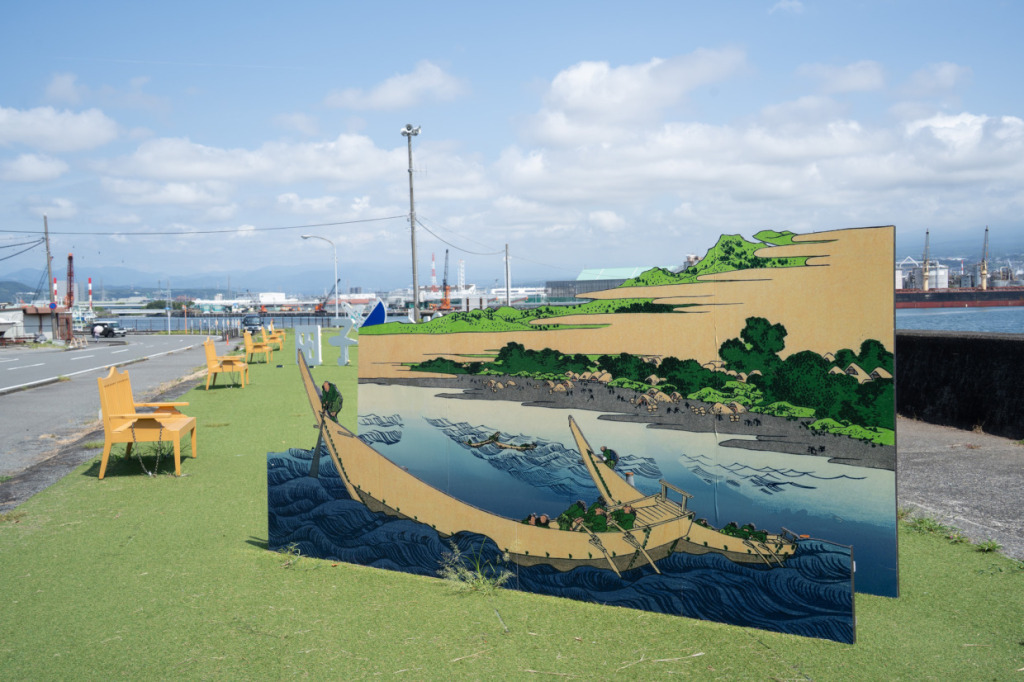
They’ve even thoughtfully provided a cutout panel of Tago Bay near Ejiri on the Tōkaidō. It’s the perfect spot that fits the concept of this cycling journey.
…However, the view of Mount Fuji was unfortunately obscured by clouds. In the summer, it’s the fate of high mountains to be hidden once the sun warms the air, which is a bit disappointing nonetheless.

In Hokusai’s Tago Bay near Ejiri on the Tōkaidō, the foreground shows fishermen struggling with their catch in the sea, while workers at salt fields are depicted along the shore. The base of Mount Fuji is hidden by clouds. If only the peak of Fuji had been visible today, the scene might have matched the composition of the print almost perfectly.
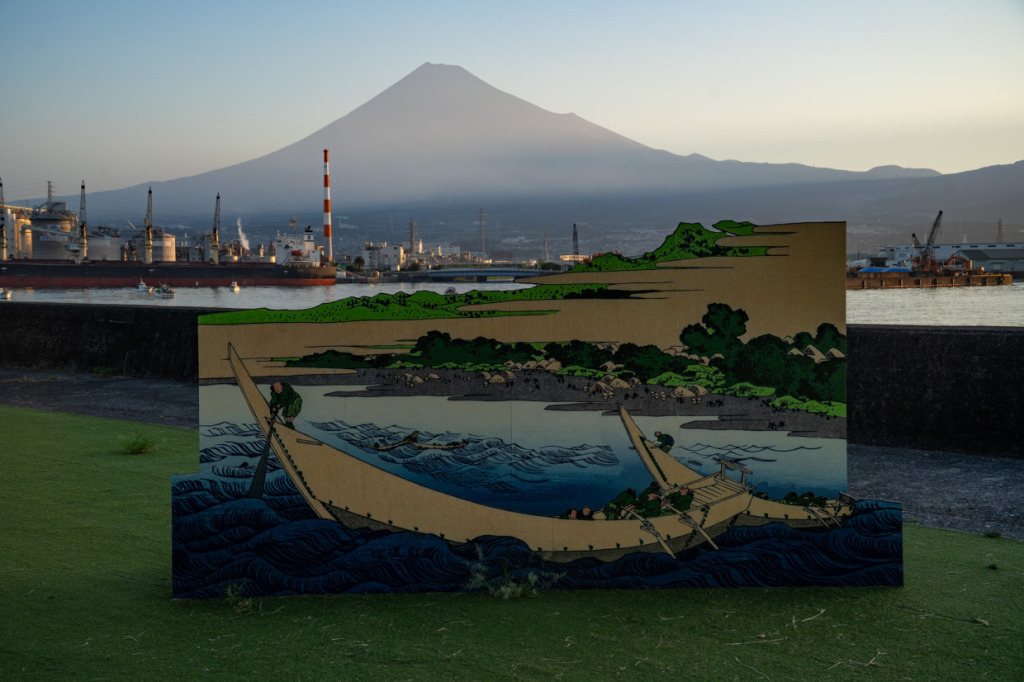
With Mount Fuji visible, the scene looks like this. The mountain and the sea remain unchanged, but the people who once worked in the salt fields have been replaced by port facilities and a power plant. This contrast between the enduring natural landscape and modern infrastructure gives the area a charm reminiscent of a contemporary version of Tago Bay near Ejiri on the Tōkaidō.
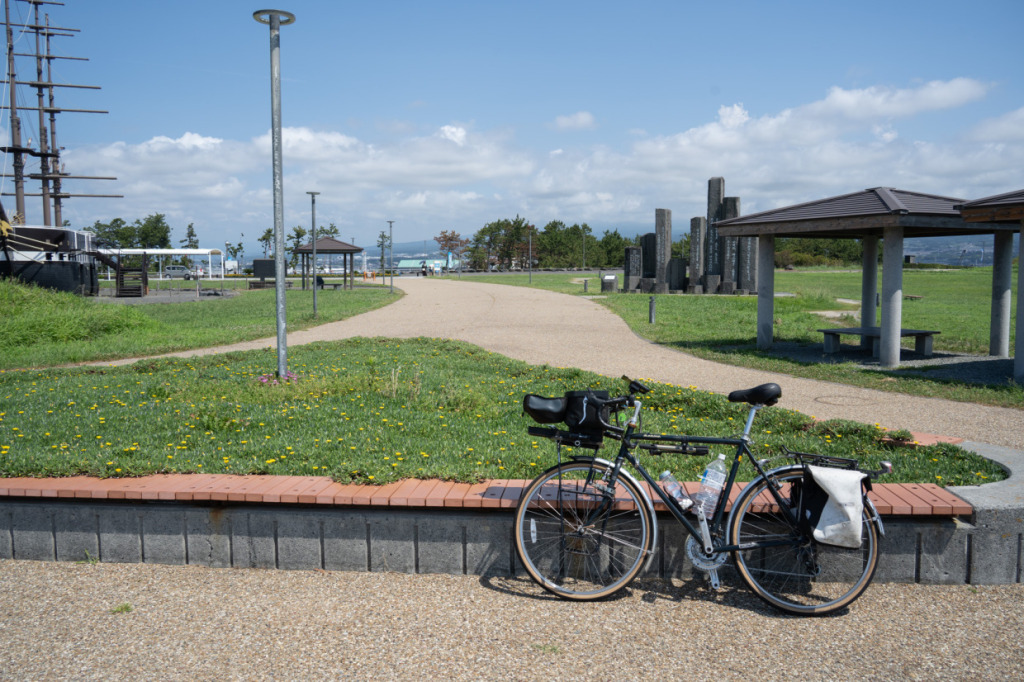
Fuji no Kuni Tagonoura Minato Park itself is spacious and a very pleasant place, with a refreshing sea breeze.
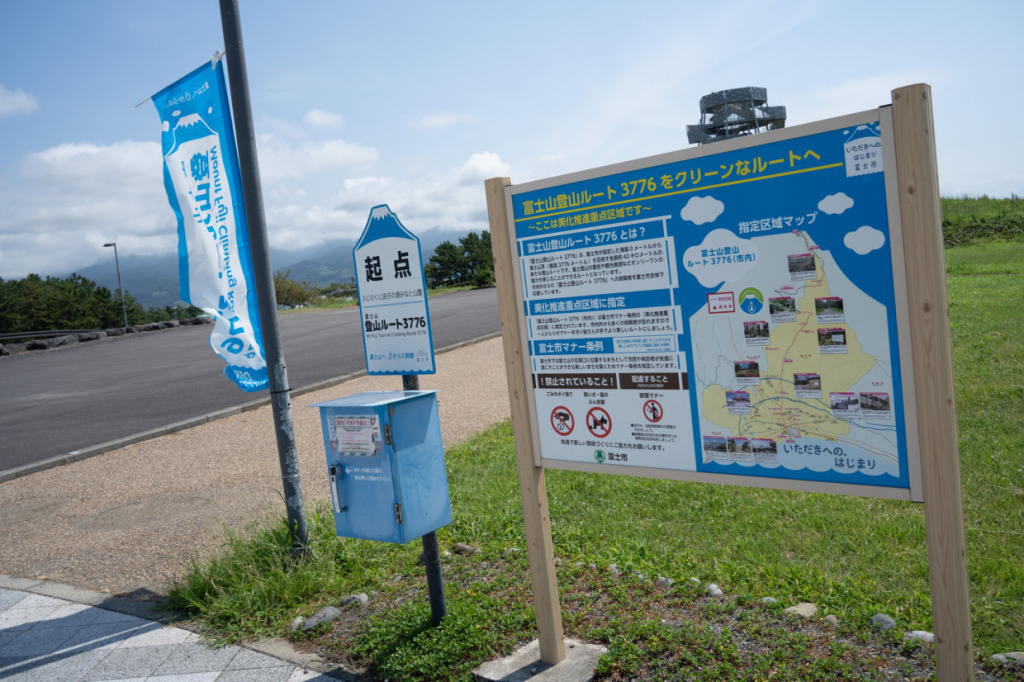
This spot also appears to serve as the starting point for “Zero-Fuji” climbs, a style of ascent known as Sea to Summit, where climbers aim for the summit starting from sea level.
Since the climb gains the full 3,776 meters of Mount Fuji’s elevation from zero, the route is also called Route 3776—a daunting journey just to imagine.
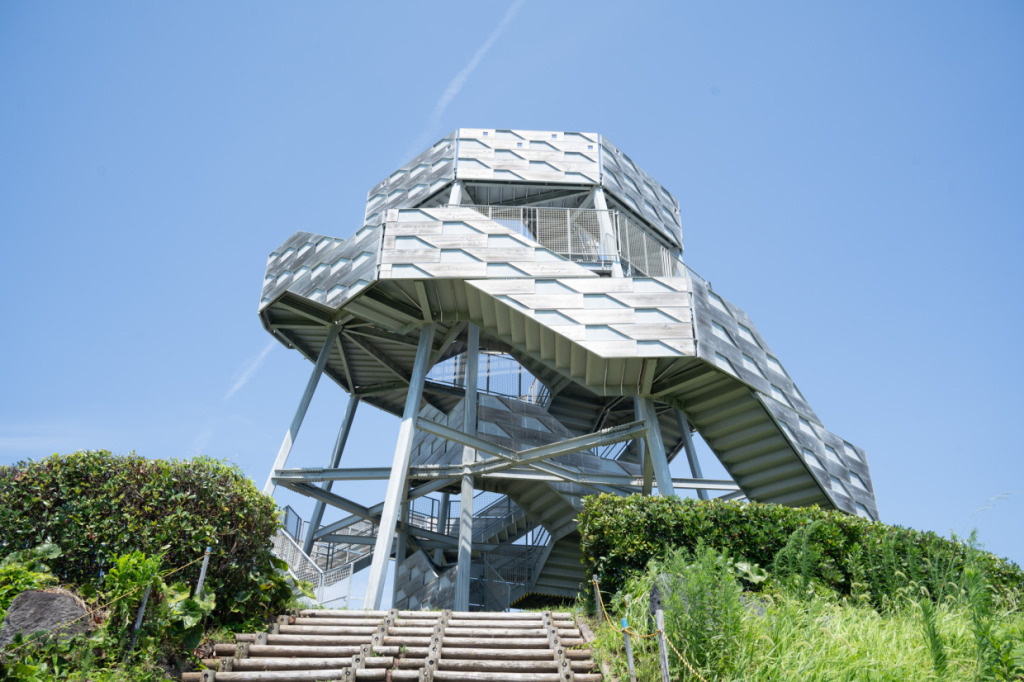


Climbing the stairs takes a bit of effort, but the summit offers a breathtaking panoramic view of Tagonoura. It’s definitely worth a visit.
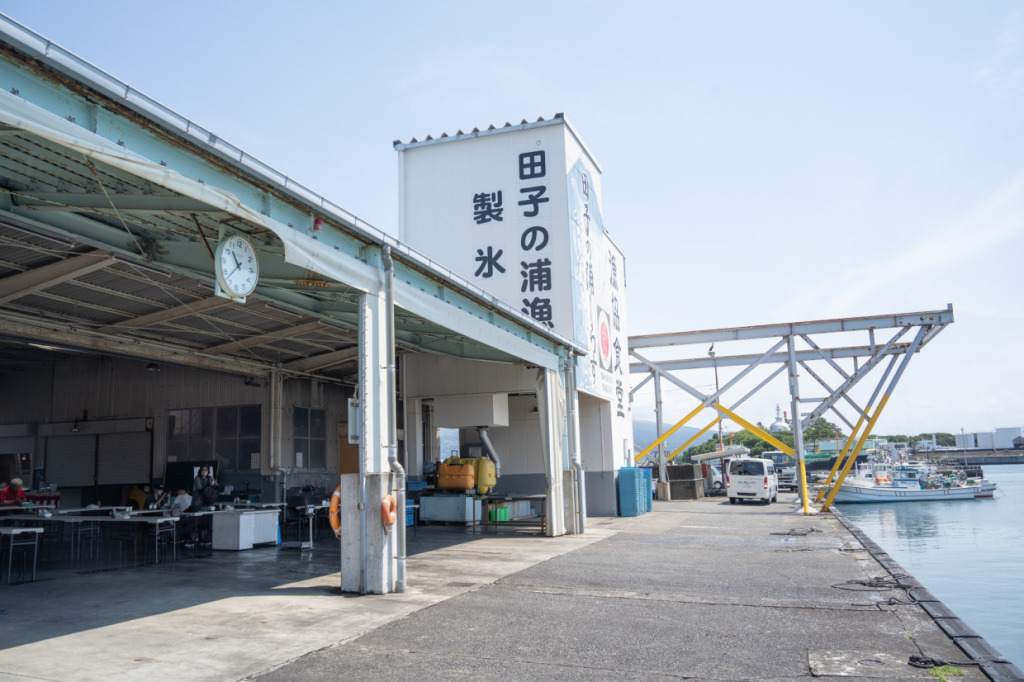
Here, I take an early lunch break. Just a short distance from Fuji no Kuni Tagonoura Minato Park, I stop for a meal at the Tagonoura Port Fisheries Cooperative Cafeteria.

The specialty here is the fresh whitebait bowl. It was my first time eating whitebait raw, and I was a bit nervous about how it would taste—but after the first bite, I couldn’t stop. Despite being raw, there’s none of the typical fishy odor; only the natural sweetness and umami of the whitebait spread across the palate. Truly, it’s exquisite. I can wholeheartedly recommend the fresh whitebait bowl at the Tagonoura Port Fisheries Cooperative Cafeteria.
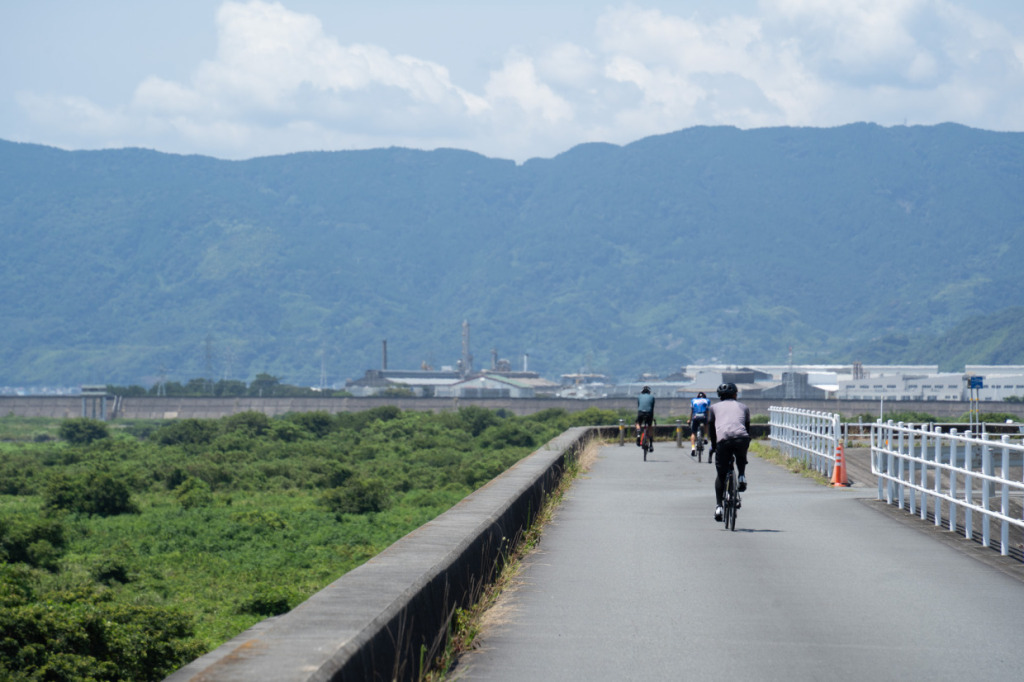
After finishing lunch, I head to the next spot: Fuji from the Katakura Tea Fields in Suruga. Since it’s located inland, I leave Suruga Bay behind and ride north.
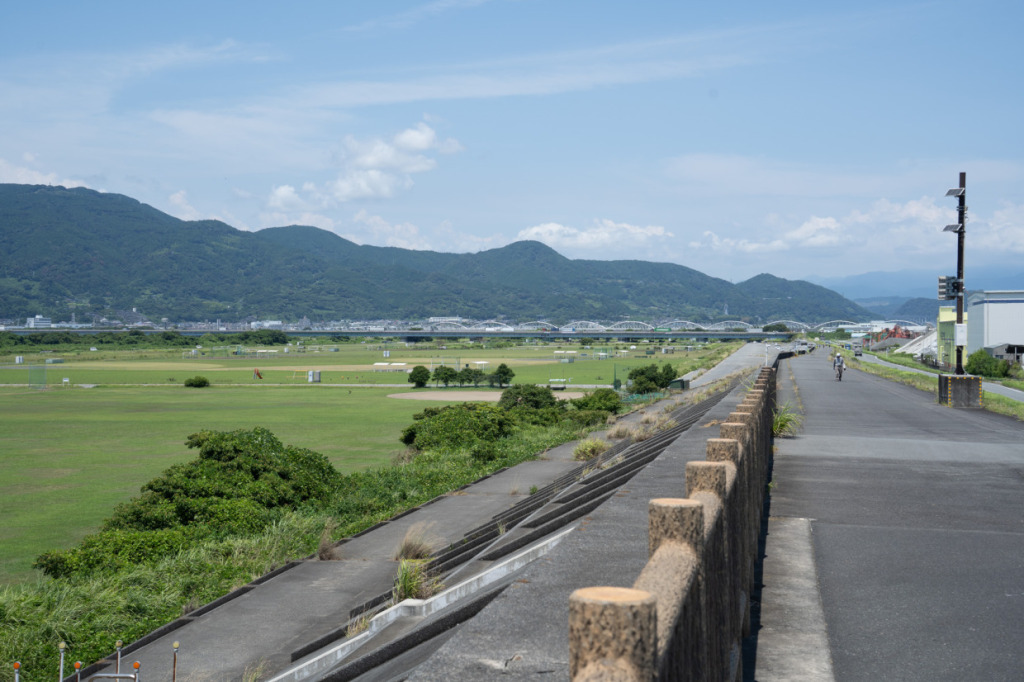
Leaving the coastal area behind, I now enjoy the riverside paths along the Fuji River. In Shizuoka, the roads for cycling are wide and very comfortable.

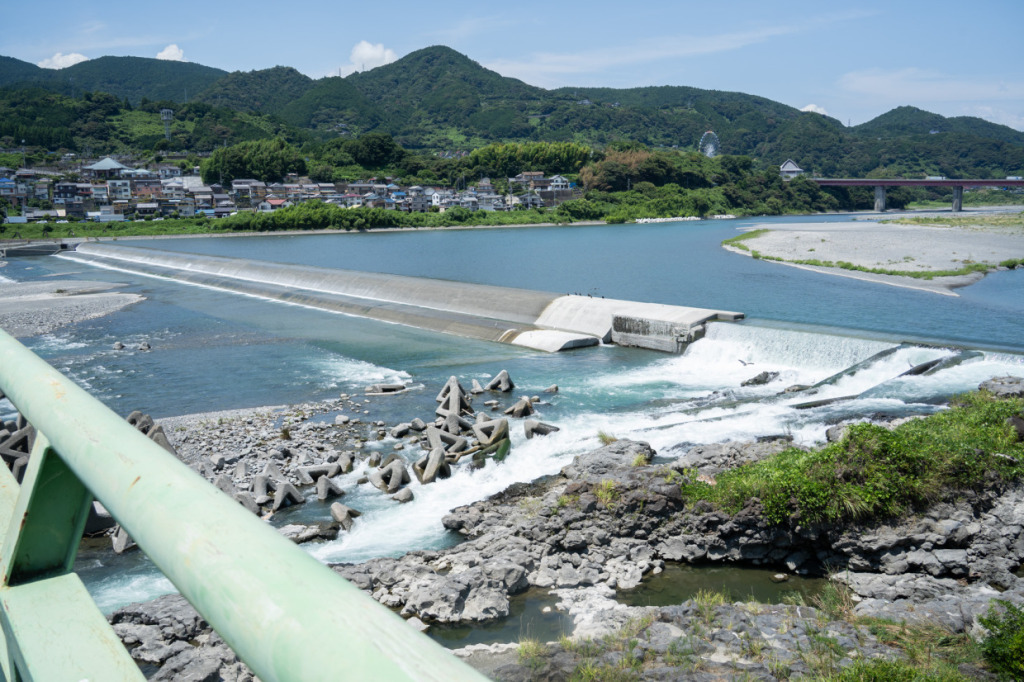
With greenery and the river along the way, the scenery keeps changing, never growing dull. It’s truly an ideal cycling route.

I take a short break at the roadside station Fujikawa Rakuza along Prefectural Route 10.
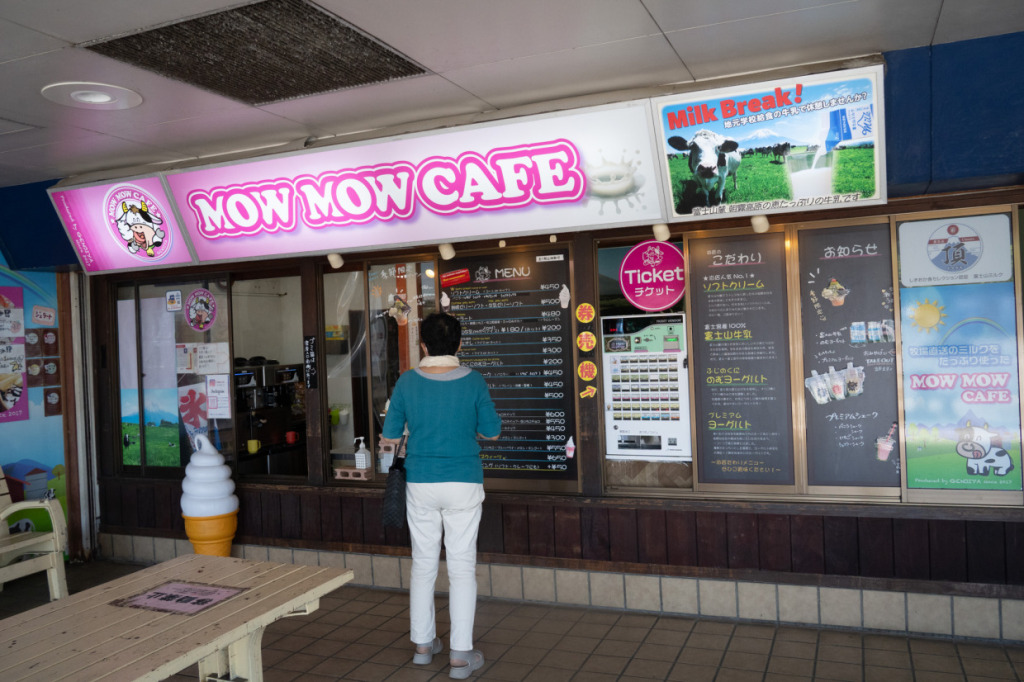
I take a break at MOW MOW CAFE, known for its soft serve made with milk from the Asagiri Highlands.
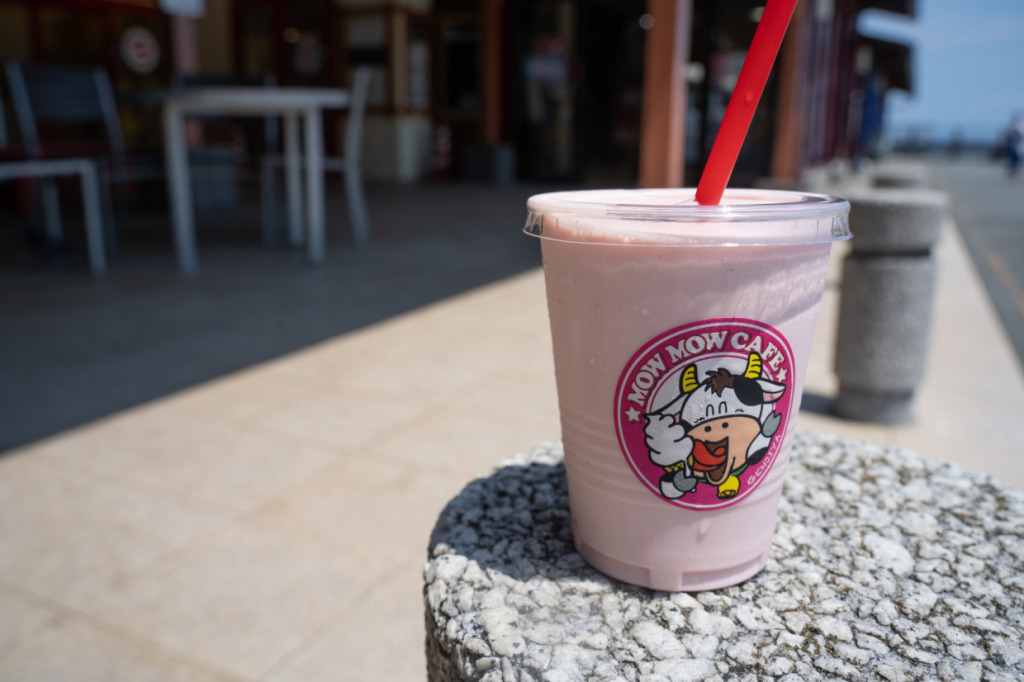
That said, what I actually got was the premium strawberry shake. On a perfect summer cycling day, you naturally crave a chilled drink rather than something solid. It was absolutely delicious.
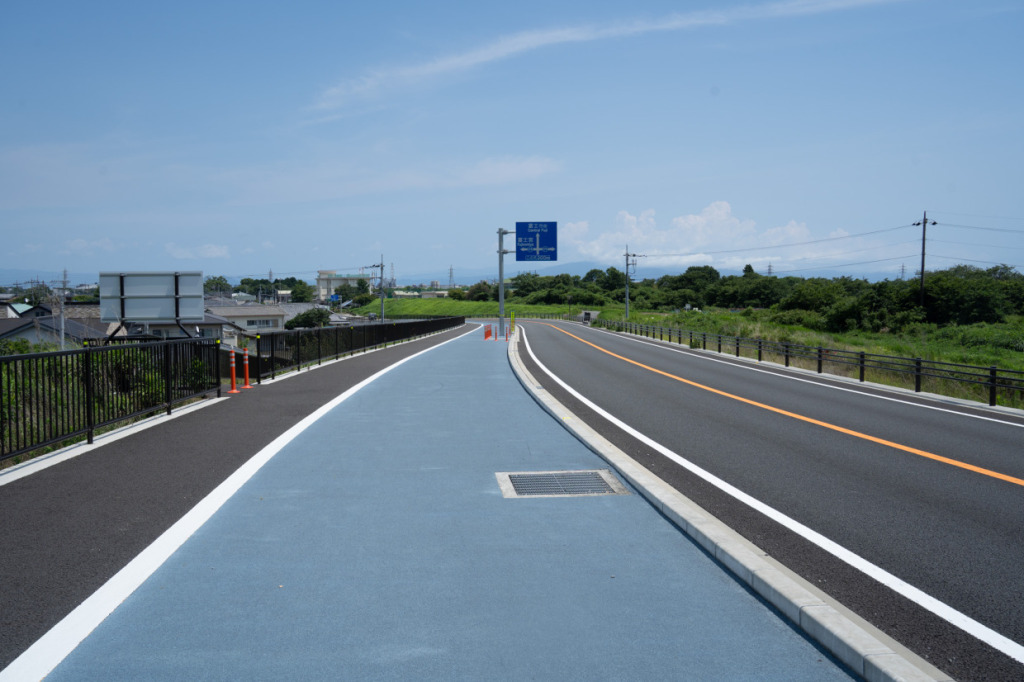
After cooling off, I head east. Even as I leave the riverside, the roads remain wide. Fuji City truly is a cyclist-friendly city.
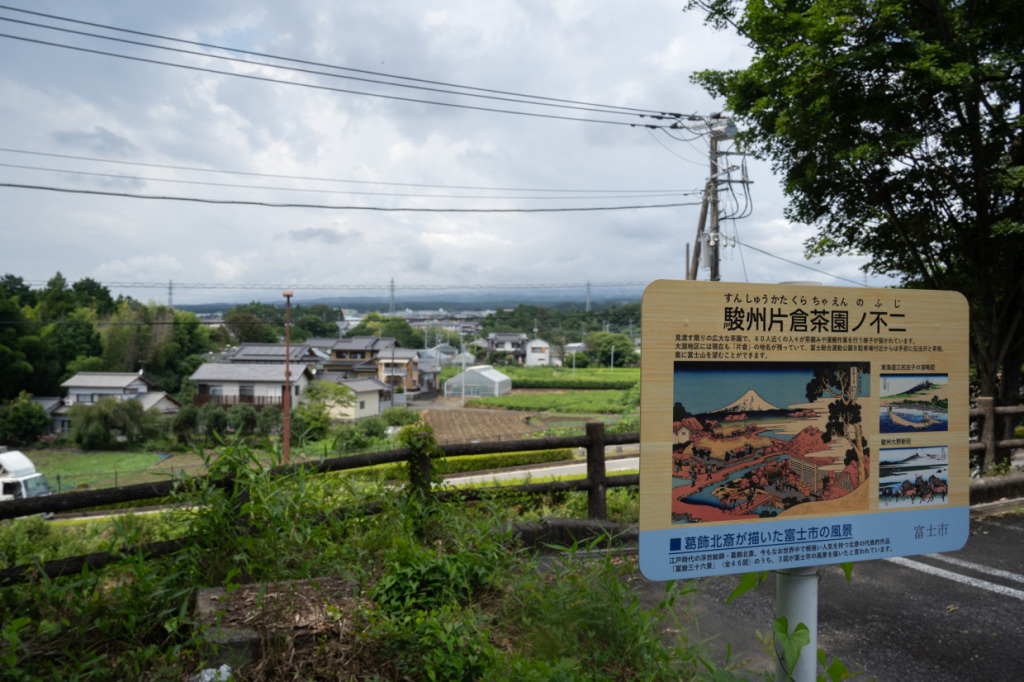
Today’s final Thirty-six Views spot is Fuji General Sports Park. The marker installed by Fuji City for Fuji from the Katakura Tea Fields in Suruga serves as a guide. The sky is completely overcast, so Mount Fuji is not visible.
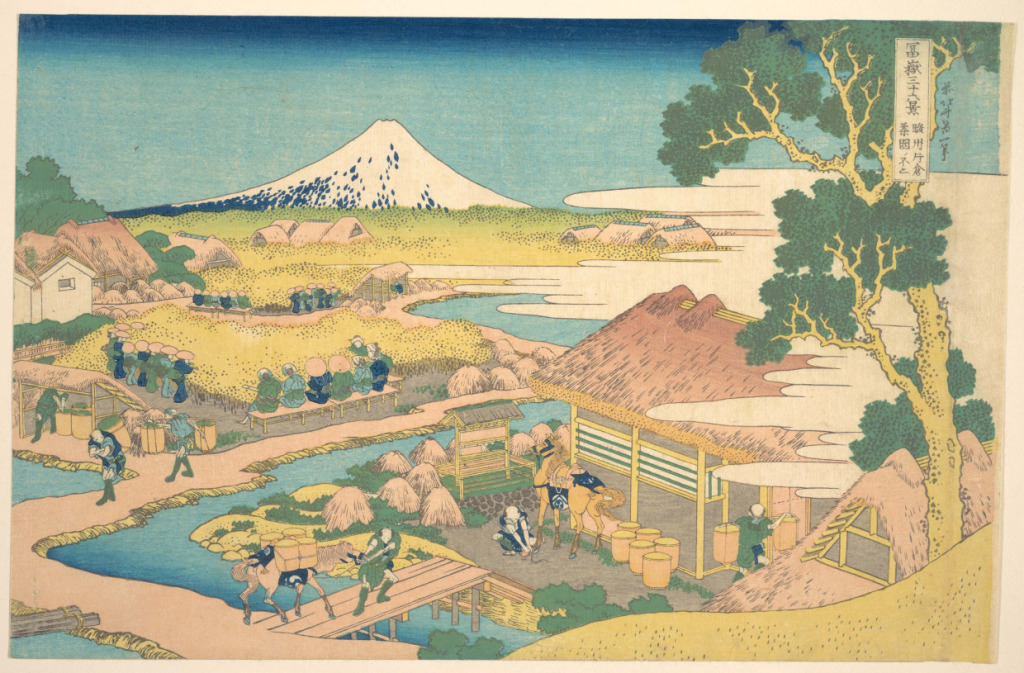
This print depicts vast tea fields stretching as far as the eye can see, with people busily working at picking and transporting tea leaves—a scene characteristic of Suruga Province, known for its tea production. The exact location where Hokusai created this work is unclear, but the name Katakura remains in the Obuchi area, and from the B Parking Lot of Fuji General Sports Park, you can still see landscapes resembling the print, including Denpōzawa and the tea fields.
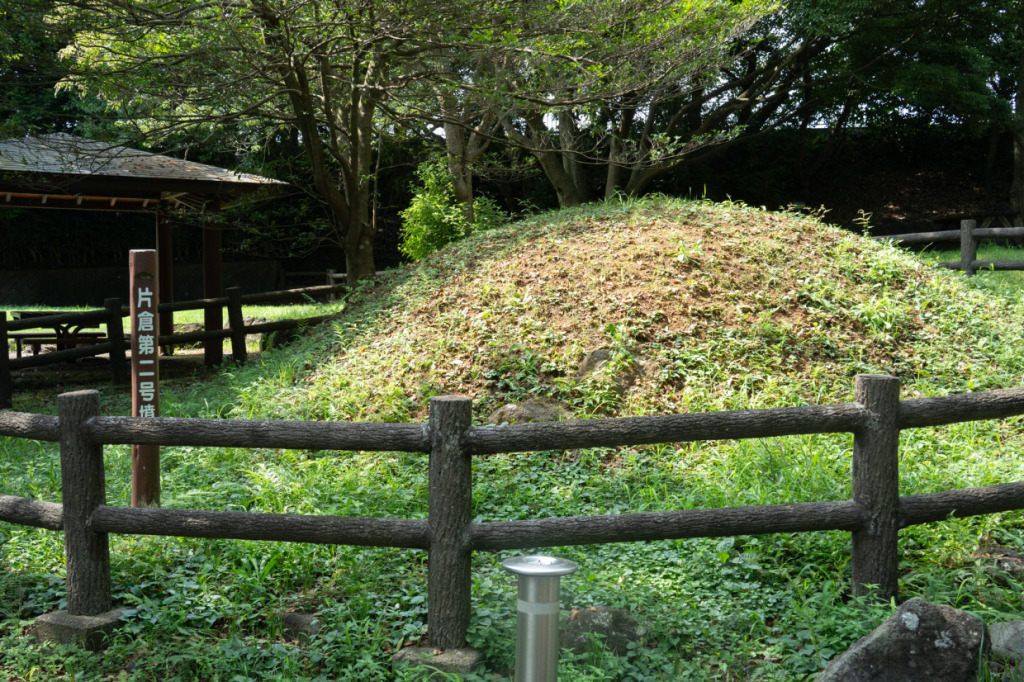
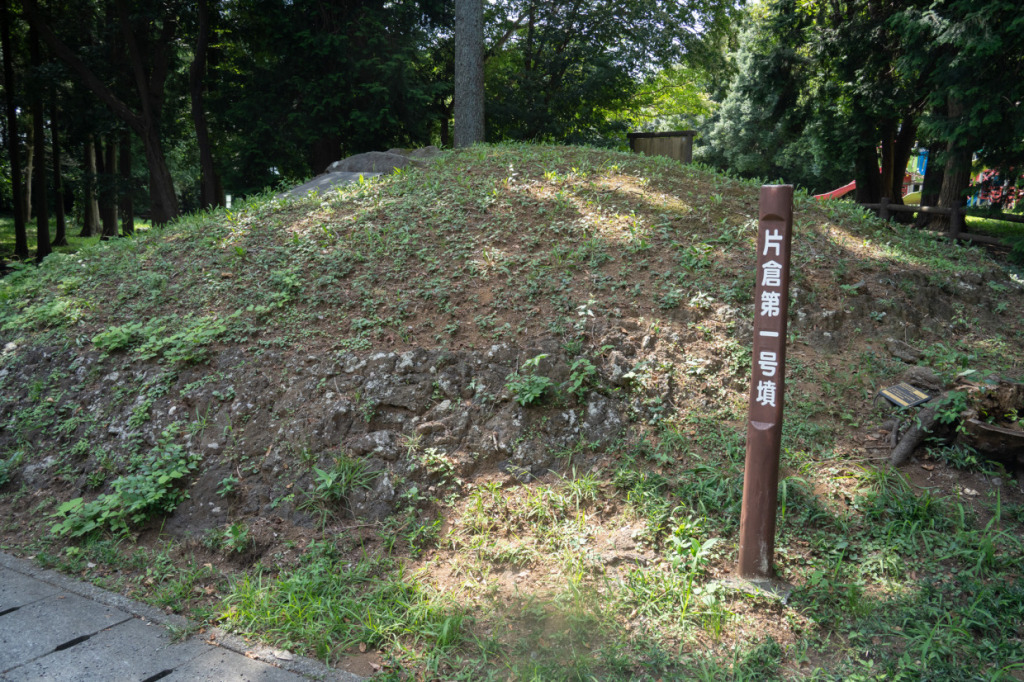
The exact location of the Katakura Tea Fields is uncertain because the name “Katakura” no longer exists in this area. However, it is said that a region once called “Katakura” existed around present-day Nakano in Fuji City. For this reason, some believe that the landscape in this vicinity may have served as the setting for Hokusai’s work.
Today, within Fuji General Sports Park, there remains an ancient burial mound known as the Obuchi-Katakura Kofun, preserving a trace of the old place name.
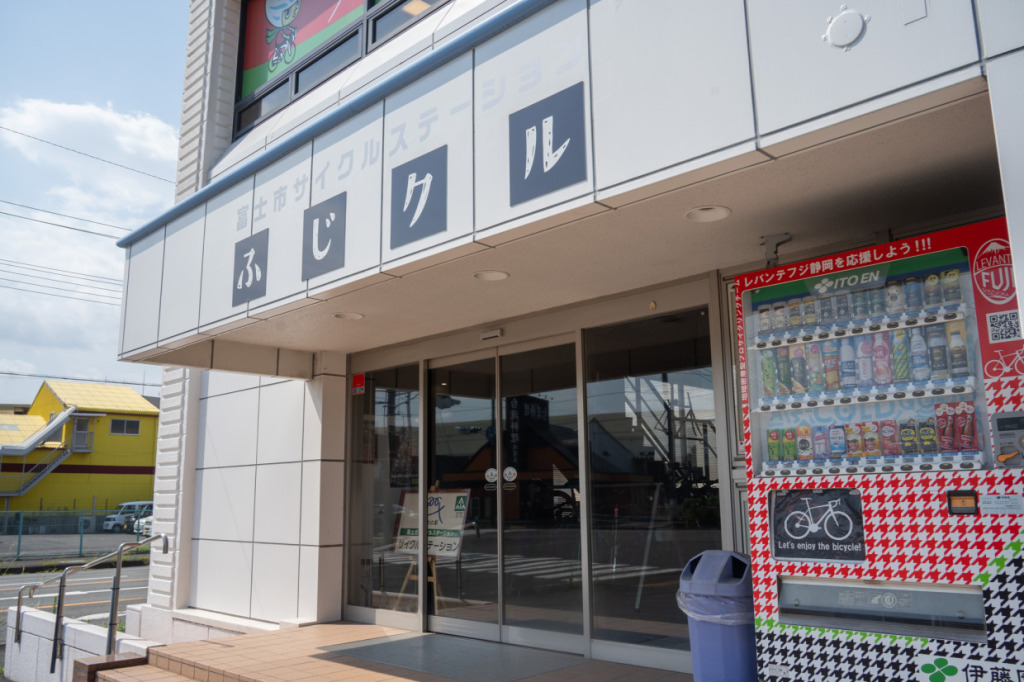
I wrap up the cycling tour at the “Cycle Station Fuji-Kuru.” Here, you can use a shower for just 100 yen, allowing you to wash off the sweat and finish your ride feeling refreshed.
From here, you can either take your bike on the Gakunan Railway from Jatco-mae Station to return home, or ride back to the starting point at Higashi-Tagonoura Station to complete a loop route. Fuji-Kuru also offers rental bicycles, making it a convenient starting point for your own cycling adventure.
Next time, I’ll take you on a ride along the inner coast of Chiba Prefecture in search of The Great Wave off Kanagawa.
🚲 Official Websites
Ukishimagahara Nature Park: http://ukishimagahara.net/
Tagonoura Port Fisheries Cooperative Cafeteria: https://www.tagonoura-gyokyo.jp/
Roadside Station “Fujikawa Rakuza”: https://www.fujikawarakuza.co.jp/
Fuji-Kuru: https://fuji-cycling.com/
🚲Pedaling Through Hokusai’s Eyes
1. Shizuoka Edition
2. Chiba Edition
3. Mt.Fuji Edition
Profile
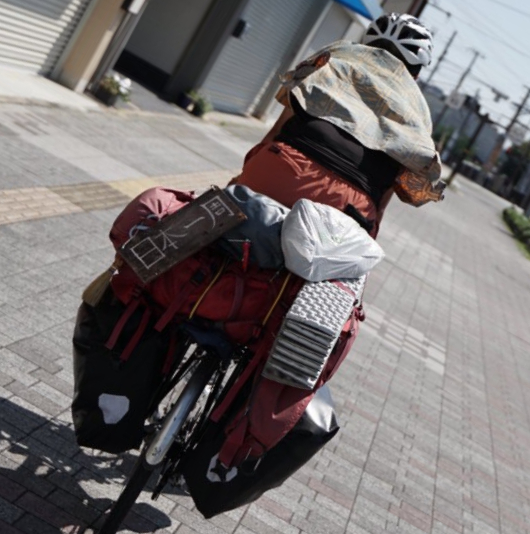
Hokokara
Originally from Miyazaki Prefecture, Hokokara is a blogger who travels across Japan with a focus on mountains and shrines. In the past, he completed a cycling journey around the entire country. Currently, through his blog Hinomoto Angya, he shares articles on mountaineering, history, and landscapes. In the future, they he plans to expand his reporting internationally, showcasing the charms of both Japan and the world.
Blog: https://fawtblog.com/
Post Date:2025.08.20